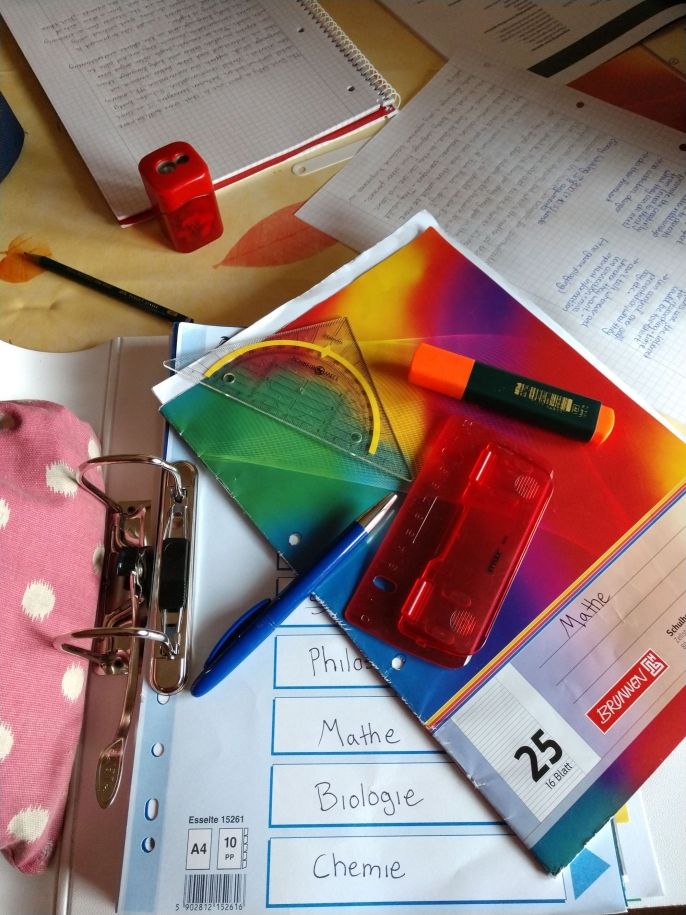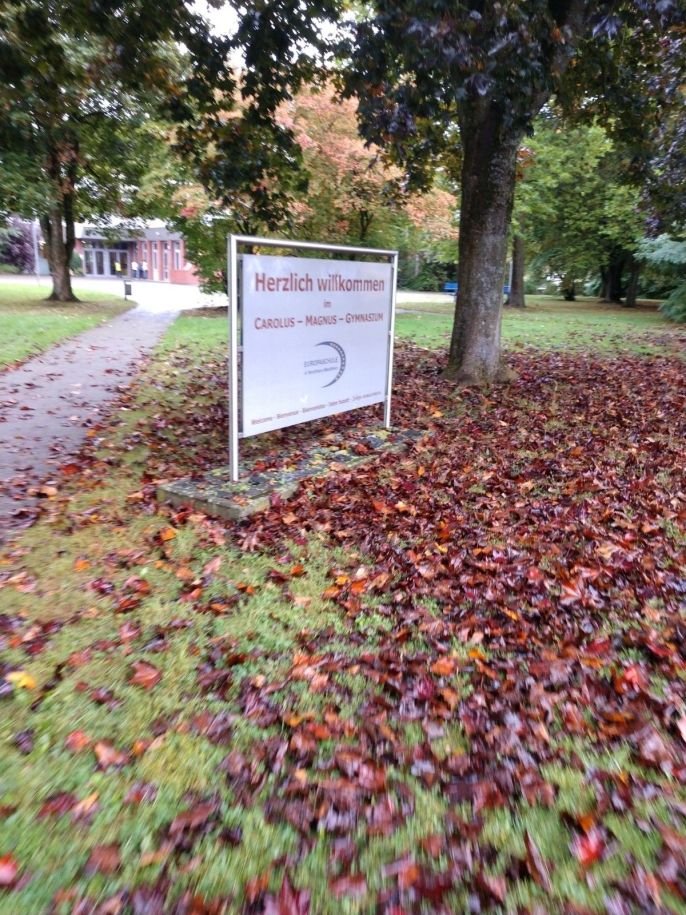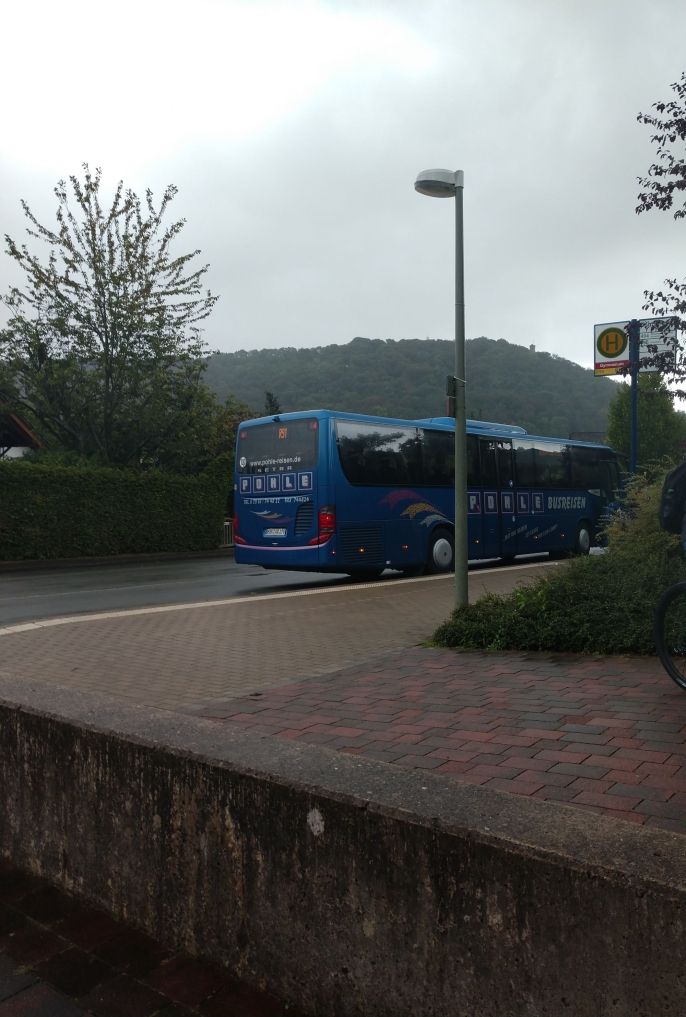A Day in Gymnasium
As you can imagine, German school systems are not set up in the way american school systems. Whether this be a small difference of how the teachers dress to school subjects and schedules, differences can be found everywhere. So without further introduction, let's go through what a typical day in my gymnasium looks like: *disclaimer!: this is long sorry not sorry ;)*
School supplies. Something I didn't think of was the difference in this very area. Most students carry around one 6'' binder with all of their classes. The binders have either two to four rings, and American three ring paper will not work. Every class also has a workbook NOT a notebook. All of the notes and work for the class stays in that specific workbook. If there is a need for loose-leaf paper students always carry one notebook with lined and graph paper for such occassions. Students rarely use pencils, and I have yet to find a mechanical being sold anywhere. Instead they use the clasic multicolored pens and white out with highlighters to emphasize important notes. This is one of the reasons I believe I have never seen a messy paper (besides my own of course).
Going to school. Schools do not provide a mode of transportation to and from school. Rather, they provide each of student with a bus and train pass that works throughout the school year to and from your home and school town. On it, states your school's name and your hometown which makes it only valid to and from those towns before or after school. It's the student's responsibility to know when and how they will arrive at school. However, there are some students who live close enough to the gymnasium that they can ride their bikes. Personally, I take the train to school and the bus home, both of which are roughly five to ten minutes in duration.
Walking into school. Walking in the main doors, there is what looks to be like a concession stand selling fresh bread, candy bars, and drinks. There is no cafeteria rather two tables that are mostly used for homework or playing card games. The tables are in the same long wide hallway as the lockers, which you must rent out. It is there where students eat, play card games, or finish homework during their fifteen minute"Grossepause" breaks after the third and fourth period. Classes are upstairs on either the second or third floors, depending on the subject. My gymnasium holds students from grades 7-13 with roughly 40 in each grade. Each class is labeled both by their year and with two letters for further identification. For example, I am in Klasse 10 EF. Each class has at least two class supervisor teachers that are in charge of making sure schedules are working well and students sign up for their Klaseur tests correctly.
Going to class. Each class is 45 minutes long with five minute breaks inbetween. Students also have about an hour after the sixth class to go into town for lunch. Bells ring to signal that students have roughly two minutes to get to their classes; the second bell signals class has begun. The most prominant difference in class is the structure of lessons. In Klasse 10, students are required to show their knowledge by explaining and answering questions. This is VERY important as it counts as 40% of the grade. This results in many presentations, long discussions, and so many hands raised for answers. The lessons are question and answer based where the teacher asks question that the students answer as the teacher slowly guides them towards the right direction. Rarely does a teacher write notes on the board for students to memorize, it is more understanding the concept and being able to articulate a competant answer. All the work is essay or writing based, even in math they must explain exactly why and how they came to that answer. There is no multiple choice or fill in the blank unless it's the first year of a foreign language class. Every classroom is equipt with a chalkboard that moves up and down, rarely do classes have a smart board or overhead projector. If the teacher wants to use one for a lesson, they are wheeled in. Some classes have a "Kuchen List" where one student signs up for each time that subject meets for a long lesson to bring cake for the class.
Teachers. Teachers do not only teach one grade level as is the set up for american elementary schools. Rather, they have their areas of expertise and teach a variety of grade levels on that subject. Another difference I have noticed is that teachers are not required to dress formally, every day is casual Friday. Germany is in the middle of a teacher crisis meaning there are simply not enough teachers for the upcoming generations. As a result, there are no substitute teachers. If a teacher is sick or on holiday, there can be one of three outcomes: lesson is cancelled, students are given work without supervision, students must sit in with another class. If the class is cancelled or moved to another location, students can find these posted on a screen as they walk into the building. Germany is also currently having a political campaign to raise the income of the elementary school teachers since they are currently receiving less. This is due to the qualifications one must acheive to become a highschool verses elementary school teacher. Across the country there are strikes supporting the movement to raise teacher salary.
Going Home. There is no set beginning and end to the school day as every student has a different schedule. Some students may have a first period one day, but none the following. This occurs because starting at grade 10, students are allowed to choose their own classes which, obviously, affects their schedule. Students must take a minimum of ten subjects completing 30 hours a week. Hence why students must know their own bus and train schedules. And because of the essay-style lesson format, students aren't given a lot of homework to complete. Teachers also rarely collect the homework and instead talk about it as a class. Which leaves me to studying the german language on my free time and spending time with my host family!
Extracurriculars. For me back home, my life practically evolved around the extracurricular activities my school offered so it's a big change here that my gymnasium offers exactly one: orchestra. Other than that, students must look for community based organizations if they wish to join a choir or sport. Since the school is strictly school learning, there aren't any school colors, rivalries, games, dances, or mascots to participate in. While this may give the impression that their isn't a close-knit student body, I would say the opposite. This type of scenario forces you to become close with those around you and make plans with friends during the school day. In every grade their is also a Klassegrupe messaging chat. This includes every person in your grade so that you can be able to ask what the homework was if you missed a day or find out if your next day first period was cancelled. It also allows the students to become closer by sending out a single invintation to everyone if there was an event being hosted nearby.



